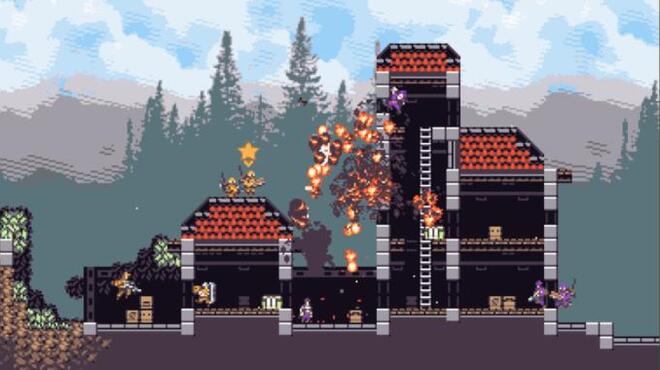Wonyun Trench Run Mac OS
Mac OS seems to break some aspect of my development experience every time there’s a major update. As this setup aged, some additional pain points emerged: Slow down due to limited resources. The hardworking open-source programmers behind the SheepShaver project explain: It enables you to run PowerPC Classic Mac OS software on your computer, even if you are using a different operating system like Mac OS X for Intel. However, you still need a copy of Mac OS and a Power Macintosh ROM image to use this program.
Fairly new to VirtualBox but not to Hypervisors.Also is the first one to show Mac OS X Snow Leopard. Tree Trimming —In another animated Get a Mac commercial for the holiday season, Mac and PC set aside their disagreements and decide to trim a Christmas tree by hanging ornaments and stringing lights. Mac tells PC that they are good friends, while PC gets nervous. Trench Run Trench Run is a mayhem-filled, laugh a minute casual 4-player action game brought to you by the makers of King Arthur’s Gold and Soldat.
 I've been trying to gain more insight into VirtualBox by reading through various
I've been trying to gain more insight into VirtualBox by reading through variousOur laptop won’t run Windows or Mac OS, nor is it particularly fast or thin. So in order to differentiate our laptop and make it more attractive to true techies, we decided to add some of the.
forum entries. There seems to be a consensus that a guest should not have the
same number of virtual processors assigned to it as there are real processors.
An example quote is :
I'm a little mystified by this, for the following reasons :

In the above example of a two-way real processor, what is the difference between running a guest
with two virtual cpus (thus potentially using both real processors) or running two guests, both defined
with a single virtual processor, which I would assume could both be dispatched simultaneously and
therefore also use both real cpus ?
The argument seems to be that the virtual cpus will somehow block out the host. However, the host will
Wonyun Trench Run Mac Os Download
only ever dispatch the guests virtual cpu when it's ready to do so. It's the host driving the guest.
Even so, I can see that there may be moments when both real cpus are executing guest virtual cpus and
the host - whether it's VirtualBox or the true Host (say Linux) - need to execute. Firstly, I would assume
these instances do not occur often and it's far more likely that the guests are regularly leaving VT-X operation
by a VM exit. Even if they are not, I thought that's what the VT-X pre-emption timer was for, so that the
Host (VirtualBox) can regain control after a specified time interval. Also, Host I/O interrupts are likely
to be happening almost all the time, thus resulting a VM exit on the processor fielding the interrupt.
If all else fails, I would expect the true host (Linux say), would always regain control via a timer-pop as it's
based on a pre-emptive time-slice dispatcher. It would then dispatch tasks based on priority/readiness.
The biggest problem I've seen with Hypervisors is not the Host being blocked but a multi-processor guest
having one or more of its (virtual) processors not being dispatched frequently enough. Thus usually results
in spin-lock type problems in the guest.
My previous experience of Hypervisors involved bare-metal types, so I'm assuming a hosted type such as VirtualBox
has different scheduling/dispatching considerations ?